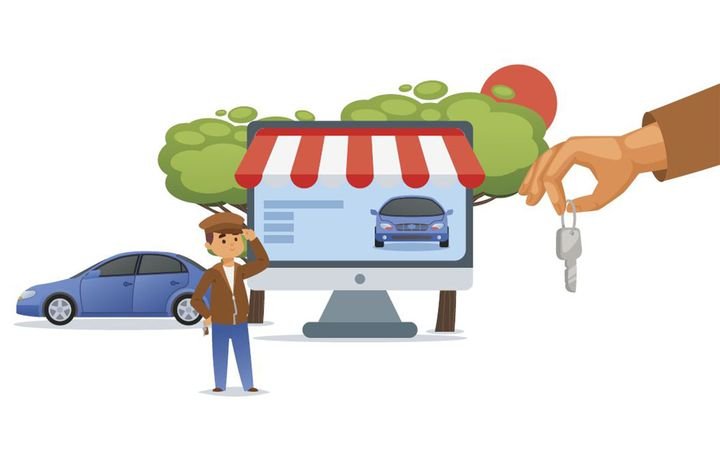Digital Retail: What Happened to Middle Ground?

If you have been using digital retailing primarily as a lead generation tool, or if you are still using archaic contact requests, it’s time to put some serious thought into the middle ground of the digital retailing revolution.
IMAGE: Getty
Let’s face it, automotive dealers are being pulled in multiple directions right now. The manufacturer wants you to update your showroom and order new furniture for a fresh look, but in the next breath tells you your car shoppers don’t want to visit the dealership. The pandemic added a layer of complexity, but also helped us all leverage technology. So here we are, amid the great reopening of the U.S. economy, and with ever evolving technology being marketed as the future of automotive retail. Vendors, influencers, and manufacturers have been making a push for the biggest buzz word since market-based pricing — digital retailing.
But are we there yet, or rather, are you there yet?
While some dealers are having great success with digital retailing, others are struggling to measure incremental gains and wrestling with a dramatic process change. The reality is, dealers don’t have to go all-in on a digital retailing commerce solution.
You don’t need expensive, sometimes cumbersome e-commerce software solutions to get the most valuable engagements. There are various features that add a lot of value for the consumer and the dealer without going all-in. Trade-in valuation widgets and pre-qualification tools are the obvious picks, but when it comes to consumer homework, payments estimations can also be important.
For a complete engagement solution, start with the following features and approaches to your website before considering a “Carvana-like” metamorphosis.
Trade-In Valuation Tools: Customers are conditioned to be concerned about trade-ins. They also know that they can easily leave your website to get consumer-direct trade information, so make sure that your trade tool is ultra-consumer friendly, especially on mobile browsers.
Schedule an Appointment: Setting an appointment is obviously a win for the dealer, but this should be just as beneficial for the consumer. Make it easy for a customer to set an appointment on a specific vehicle and ensure they know it will save time and create a better shopping experience.
Payment Engagement: Monthly payment is the most important financial consideration a customer will make prior to signing paperwork. When it comes to payment, the method of engagement and process is critical to moving the customer to the next step. Payment engagement must be easy to use and accurate, without overpromising or creating unrealistic expectations. Avoid “penny payments” and generic interest rates. Most importantly, make sure the solution provides you an opportunity to contact the customer directly to begin the conversation.
Dealer Specific Incentives: Homepage banners of OEM incentives might catch the customer’s attention, but don’t forget about incentives specific to your dealership. Are you successfully sharing perks that only you can provide? Let customers know why they should buy a new or used vehicle from you, even if the incentive doesn’t have a specific dollar value.
Shopping by Budget: Your website makes it easy to filter and sort by price, but don’t forget about payment. If 80% of your customers are financing, then a majority of your customers are payment buyers. By allowing customers to shop inventory by monthly payment, customers are exposed to vehicles that they would have not previously considered. This is especially important when inventory is limited, prices are higher, and dealers are needing customers to be more flexible.
Website Communication Tools: Make it easy for customers to ask a quick question or reach someone directly. Chat tools that focus on multiple communication channels work best. Instead of expecting your chat tool to include digital retailing functionality, consider having your chat provider engage through Facebook and also getting customers to opt-in via text messaging.
When exploring various software solutions and applications for your website, it is important to take into consideration the specific purpose and core competency of the product. Your chat provider should be the very best at after-hours and early digital communication. Generic payment calculators and estimated payments are outdated and consumers expect more from your website. If you have been using a digital retailing solution primarily as a lead generation tool, or if you are still using archaic form fills/contact requests, it’s time to put some serious thought into the middle ground of the digital retailing revolution.
Dan Mayer is the CEO of AutoAPR, a solution positioned to bridge the gap between traditional and digital retail with easy and secure virtual payment calculations matched to a dealer’s inventory.

